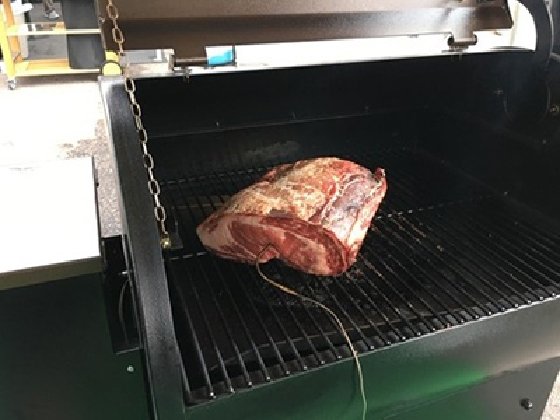
Getty Images
How removing latency can unlock even greater value from IoT
Many applications of IoT require real-time information to give value to customers, whether it's for the safety of autonomous vehicles or cooking the perfect prime rib.
Several years ago, some co-workers and I decided to build a cloud-connected, Wi-Fi-controlled BBQ. Why did we do this? To grill the perfect piece of meat, of course!
With Wi-Fi control, you can place your slab of prime rib on the grill and cook it slowly and evenly so it is ready to eat by dinner time. Better still, you can repeat the process over and over so you can consistently enjoy the perfect piece of meat whenever you want. That's because the temperature profile can be stored in the cloud, allowing the BBQ to reproduce the ideal settings.
Using AI and historic machine learning, you can adjust for the specific weight of the prime rib to get the right settings in place. By creating a digital twin, you can make virtual digitized recipes that can always be duplicated. A digital twin is the software representation of a device -- in this case, the BBQ -- in the cloud. You control the connected hardware with the digital twin.
The actual BBQ grill, for its part, resides locally. In my case, that means in my backyard and not in the cloud. However, one drawback with cloud-connected IoT devices is that there could be latency issues when data is transmitted from the cloud to the physical device. For example, it may take several tens of seconds for the BBQ to send sensor data to the cloud and receive instructions to adjust its temperature settings per the recipe.

The evolution of IoT
When IoT first emerged, it was all about the devices and not about the intelligence. Consumers bought a connected thermostat for their homes for many reasons, including the convenience of a simpler interface for advanced programming and remote control of the device. These initial systems were just remote-controlled devices, though, and not really IoT.
Then, the IoT space evolved. Suddenly, your smart thermostat could study your behavior and control the HVAC system based on various factors, such as your usage patterns or the price of power at a given time from data gathered through the internet. That meant the system could save you money, while lowering your carbon footprint.

As more intelligent IoT systems emerge, the ultimate benefit is behavior modification. I buy the smart thermostat at first because I think it's cool. If it helps me stay comfortable, while conserving energy and reducing my energy bill, that is a huge improvement over what came before.
One of the best things that IoT has going for it today is the addition of AI and data collection. For example, a connected washing machine that is a few years old has started to vibrate during the spin cycle. It would be nice to know if the bearings are starting to give out. And, if the problem persists, it's only a matter of time before the washing machine pulls itself off the wall and floods your ground floor. With AI, manufacturers can analyze trends across thousands or hundreds of thousands of other washing machines and accurately infer when one will fail. Then, we can take the proper course of action, as recommended by the AI engine, such as sending for a technician or sending a warning on the user app to resolve the issue before disaster strikes.
An end to IoT latency
Back to that BBQ example, the use case prompts lots of discussion around edge computing and latency. There is latency between the digital twin in the cloud and the BBQ in your yard. The result of this latency might mean your food turns out to be overcooked. Maybe you notice; maybe you don't.
Systems that have longer latency also end up doing data collection and data processing separately. The application use case and business behavior change if data collection and processing can be simultaneous. In such systems, cloud-based resources can continue to collect massive amounts of information and manage large data models. Localized servers can compare pre-trained information to local data and management of devices in real time.

In some cases, latency could affect usefulness or have negative safety consequences. Take, for instance, an autonomous vehicle receiving data from the cloud. Getting course correction information due to real-time road conditions ahead means you can't afford to have seconds of latency because that could result in the vehicle making a poor decision and crashing. In such systems, localized servers can compare stored pre-trained information to local data and advise autonomous vehicles to avoid latency issues and operate at peak efficiency.
The good news is that there are now solutions that can handle large data models and efficiently handle AI processing in localized environments. Back-end infrastructure can now accomplish more data processing with less. The benefit for companies is that they can continue to collect data, which is increasing exponentially, and train from it. Edge devices then have the ability to get evermore intelligence and predictive capabilities from that data in real time.
Once you get intelligence from your data, you can start to use it in ways you never thought possible before. That's when breakthrough innovation really starts to happen.
About the author
Mark Wright is technology evangelist at GSI Technology Inc. He comes from a career in electronics systems, spanning high-reliability designs and new technology applications. He began his career designing board-level products for Computing Devices Corporation, now GD Canada. He has driven product management for new technologies, such as ternary content-addressable memory and IoT, at companies such as Integrated DNA Technologies, Ayla Networks and Samsung Electronics. Prior to joining GSI Technology, Wright consulted for early-stage startups on technology and business development issues.





